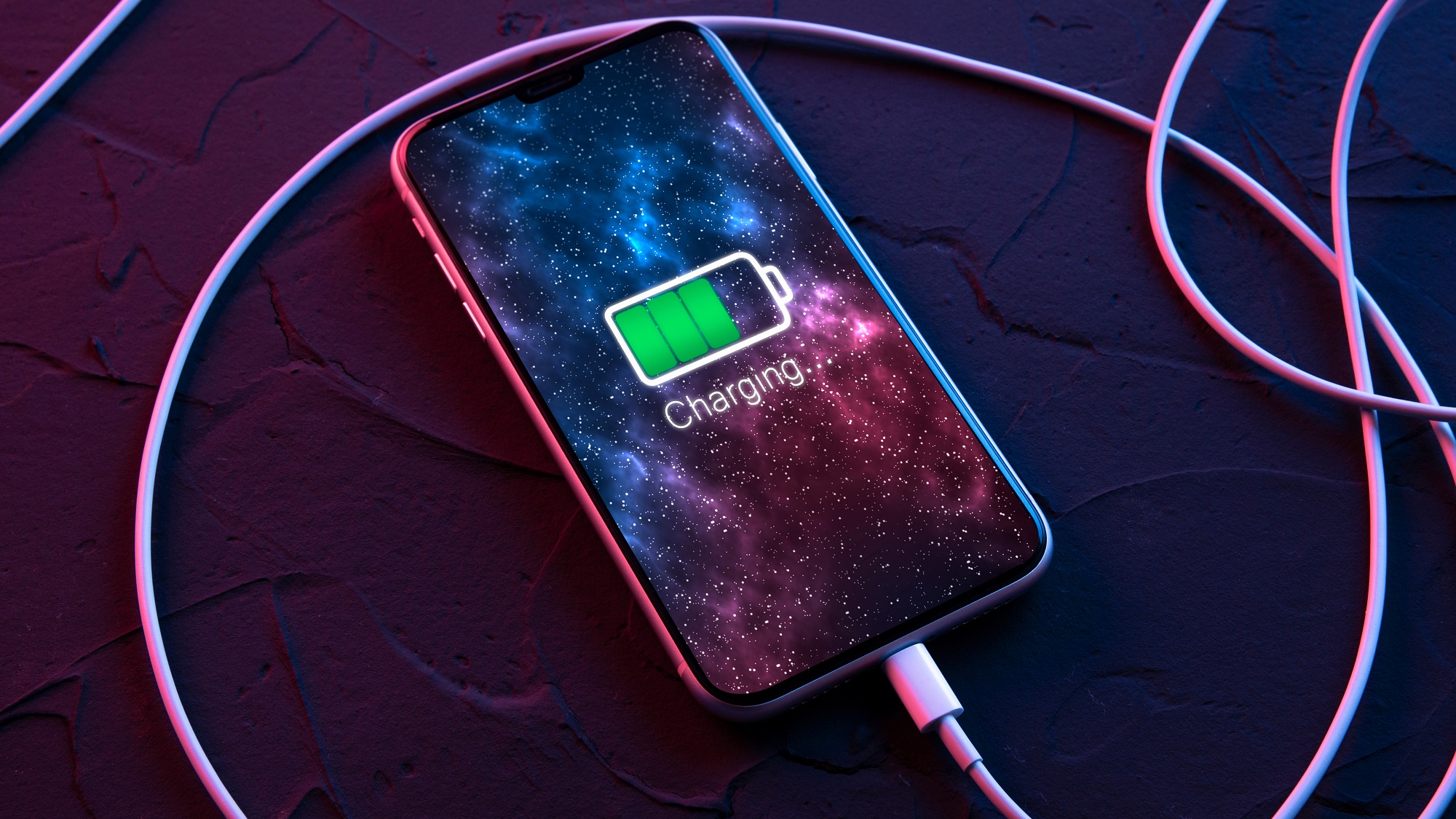I don’t want my phone to fully charge in five minutes, I want the battery to last longer
Fast charging can be useful, but it shouldn't replace solid battery life

Is there such a thing as too fast? Apparently not where battery recharging is concerned. Over the years we’ve seen fast charging speed rise exponentially, culminating in Redmi’s announcement that it’s developed the first (almost) 300W phone charger.
The Chinese phone maker posted a video of the charger in action on social media, showing a 4,100 mAh Redmi Note 12 Discovery charging from 0 to 100 in under five minutes, reaching 290W charging speeds in the process. An absolutely astonishing feat, but one that is wholly unnecessary.
You see, I don’t want a phone that can recharge in five minutes, because fast charging is very liberal with its heat production. That's not a good thing, especially given how detrimental heat is on long-term battery health. But it's not my main problem, rather I want phone makers to start taking strong battery life more seriously.
I want them to offer something that isn’t gasping for power by the time I go to bed. How fast the device inevitably recharges is absolutely inconsequential,, especially if it's charging overnight.
I’ve had several smartphones throughout my life, but my favourite by some distance was the Sony Xperia Z3. It was far from perfect, and I vividly recall having to wait several months for an upgrade to Android Lollipop. But it did offer an incredible battery life, something no flagship phone I've owned has come close to matching.
I never quite got the phone to last two days, regardless of what Sony’s marketing said, but I could squeeze over 24 hours of use out of the phone without breaking a sweat. The only thing that ever seemed to sap the battery to any significant degree was Pokémon Go, but by the time that launched I’d owned the Xperia Z3 for almost two years.
Modern flagships have pretty embarrassing battery life
At the moment I’m rocking a Google Pixel 6 Pro, a phone that offers a lot of great qualities — great photography, solid performance and all at a price point that was slightly less than its rivals. Unfortunately battery life isn’t one of its strong points, lasting just 7 hours and 53 minutes during our testing.
Sign up to get the BEST of Tom's Guide direct to your inbox.
Get instant access to breaking news, the hottest reviews, great deals and helpful tips.
On a normal working day my phone often hits 15% shortly after dinner. On a day of particularly heavy use, especially if I'm at an event like MWC 2023, I can be under 50% by lunchtime. That won’t be enough to get me to the end of the day, and necessitates a session with a charger or a portable battery pack.
But then I look at our list of the best phone battery life, and see the kind of batteries other phone makers offer. The ASUS ROG Phone 6 Pro tops that list with 15 hours and 30 minutes of battery life. That lifespan is pulled from a monster 6,000 mAh battery and is probably necessary for a high-spec gaming phone like this to perform correctly.
But the ASUS is followed by the iPhone 14 Pro Max, which clocked in at 13 hours 39 minutes. That outmatches its predecessor, the iPhone 13 Pro Max, and the Samsung Galaxy S23 Ultra by over an hour.
While phone batteries have improved dramatically over the past few years, our list of the best performing batteries shouldn’t be populated with as many budget and mid-range phones as it features. 8 of those 15 phones cost under $300, and it’s weird to think of cheap devices offering better battery life than flagships that cost three times as much.
Better battery life doesn’t necessarily make those phones better, they are cheap for a reason after all. You could argue that the strong battery life is designed to make up for those shortfalls, or that premium features are a much bigger power drain. But it doesn’t change the fact that flagship phone makers should be embarrassed by the fact they're failing to that segment of the market.
Fast charging is a band aid covering the wound
It’s easy to assume that super-fast phone charging is designed to make up for this pitfall. If your phone can’t last a full day of heavy use, then they could at least give you the means to restore power quickly.
There’s a case to be made to ensure people quickly add some power to their phone, especially in an emergency situation. To a point at least, and that specific point is debatable.
The iPhone 14 Pro Max regained 42% power after 30 minutes during our recharge testing, which doesn’t sound hugely impressive. But considering how long the phone lasts on a full charge, that 42% is going to last you quite some time.
At the same time the longer your phone battery lasts, the less likely it is that you’ll find yourself in that kind of situation. A super-fast charging phone sounds all well and good on paper, but it’s pretty useless if that results in you having to recharge more than once per day.
Breaking a new charging speed record generates attention, but it's not the kind of thing we should be asking of phone makers. They'd be much better off making sure the batteries they have last longer, even if size constraints tend to stop them stuffing in an enormous battery.

Tom is the Tom's Guide's UK Phones Editor, tackling the latest smartphone news and vocally expressing his opinions about upcoming features or changes. It's long way from his days as editor of Gizmodo UK, when pretty much everything was on the table. He’s usually found trying to squeeze another giant Lego set onto the shelf, draining very large cups of coffee, or complaining about how terrible his Smart TV is.
-
Grazer45G Of course, I want both. I remember that one of the first mobiles I used had a removable battery, you could pop open a hatch and take it out. So theoretically, you could just swop in a charged unit. The battery lasted 2-3 weeks, so the lifetime was anyway no problem. The battery lifetime is also important.Reply -
carlocaterer These days many of us not keeping same phone much more than a year or two- too many significant improvements each year to ignore.Reply
Plus, for someone who needs a phone or tablet for much of their work and is on the road a lot, I'll take fast charging instead- even if you tote a laptop, you need the phone as a hotspot.
Because once battery is low forget about simultaneous charging while tethering \ multitasking \ traveling- a 5 minute break more tolerable than 1 hour.
But these days it's a crapshoot to find an empty seat & electrical outlet somewhere- due to COVID & police defunding + excessive shoplifting & homelessness, most places limit capacity \ cordon off \ remove seating \ cover up outlets.
As well every year of this past ½ decade has brought can't do without improvements- it's not the time to use same phone for even two years or use anything but the top of the line processor- which now lets phone run much cooler & supports UFS 4 \ LPPDR 5 \ 5G Quadruple Carrier Aggregation. Factor in the rest improved again each year- WiFi \ BT, faster & adaptive refresh, larger, better screen & resolution, faster USB \ charging... and there's one brand making this affordable universally.
Esp. now that OnePlus is on scene- it's not just a choice between $$$amsung or pay less for smaller size & lesser features. And trading in yearly is fairly affordable thru them.
Looking forward, the next processor features & multiple eSim \ iSim + if they get Fold tech right, will obligate another upgrade. -
Snapy15 I bought the Ulefone power armor 14 pro for that reason. I charge it over night and it can last me 2 days, if I don't abuse it. It actually lasted me a 13h travel time watching movies and listening to podcasts. At the end I still had a good 40%.Reply
The speed of the phone is quite alright with a 6gb Ram. The battery itself is 10,000mAh and can actually be used as a portable battery. It takes me about 3-5 hours to charge with a 60W charger (Chromebook) and about 8-9hours with a 15W.
Only downside is the size of the phone. It is quite think and is fairly heavy.
But it's solid, I drop it quite a lot at work and on ceramic and there's still no scratches even with no case.
